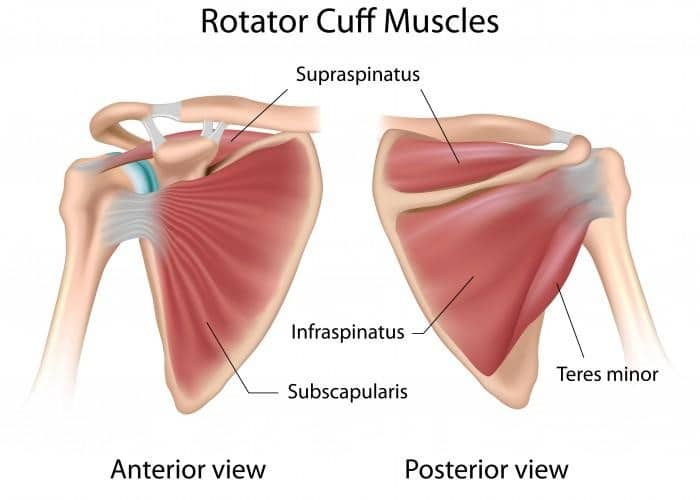What is the Rotator Cuff: Injury and Prevention
Have you heard of the rotator cuff (RTC) at some point in your life? Do you know what it really is? If not, we’re here to help! And if so, here’s a review 😊
Muscles of the Rotator Cuff
A group of 4 muscles that surround your shoulder makes up your rotator cuff. They function to increase muscular stability of your shoulder joint. Each of these muscles also has an action that assists with movement of your arm.

Why is the RTC so commonly injured?
Many people commonly injure the rotator cuff. The most common RTC injuries include RTC strain, partial tear, or full tear. Can RTC tears be healed conservatively by doing physical therapy? In short, YES! but other times you may need further medical intervention. Several factors contribute to the prognosis with conservative treatment, including mechanism of injury, age, and severity. However, physical therapists often treat injuries to the RTC and outcomes can be very successful. This region becomes susceptible to injury based on anatomy and biomechanics. Imagine a golf ball sitting on top of a tee. Your arm bone (the golf ball) connects to your shoulder blade (the tee). As you can see, this makes for a fairly unstable area of your body. The golf ball and tee rely on a strong network of muscles and ligaments to keep it healthy.
What’s posture got to do with it?
Furthermore, strengthening other postural muscles that support upright posture and stabilize your shoulder blade can assist in taking undue stress off the RTC. There are multiple reasons why we stress posture so much! 😊 The arm moves by actions of the shoulder complex that includes your upper arm and shoulder blade. Muscles that control both the shoulder and shoulder blade need to be in harmony to keep a healthy moving arm. Furthermore, the RTC tendons themselves are at risk of injury such as “impingement” based on shoulder anatomy. Where these muscles insert around the shoulder joint leaves little room for error. The close proximity of the RTC tendons to surrounding structures may result in rubbing against or impingement of a tendon. This may lead to inflammation or pain. Good muscular strength and stability can prevent this from happening. All the more reason to continue to work on your strength!
How to strengthen your rotator cuff
Determining appropriate treatment following a RTC injury requires a thorough evaluation of the individual. Certain exercises may be contraindicated due to the risk of causing further injury. Some cases may also warrant referral to an MD for imaging or discussion of surgical intervention. However, this blog focuses on conservative management! The exercises linked in this blog are for general RTC strengthening- not for a known RTC injury. Proper exercise prescription for an RTC injury would need to be provided by your clinician (call Atlanta PT at 770-989-1405 or visit our website atlantapt.com to reach a PT!).
Subscribe to our YouTube channel to access our full exercise library or follow the links below to try these out!
RTC strengthening exercises:
- Shoulder isometrics: 5 second hold x 5 reps for each of the 6 directions
Flexion, Abduction, Extension, Adduction, Internal Rotation, External Rotation
Standing shoulder flexion with band: Try 3 sets of 10 on each arm choosing a resistance that provides a pain-free challenge but does not cause compensations.
- Standing shoulder abduction with band: Try 3 sets of 10 on each arm choosing a resistance that provides a pain-free challenge but does not cause compensations.
- Standing bilateral shoulder external rotation: Try 2 sets of 15 with appropriate resistance.
Disclaimer: *Exercise parameters are generalized recommendations for starting out; it is always best to consult with your provider to decide what best fits your needs*
